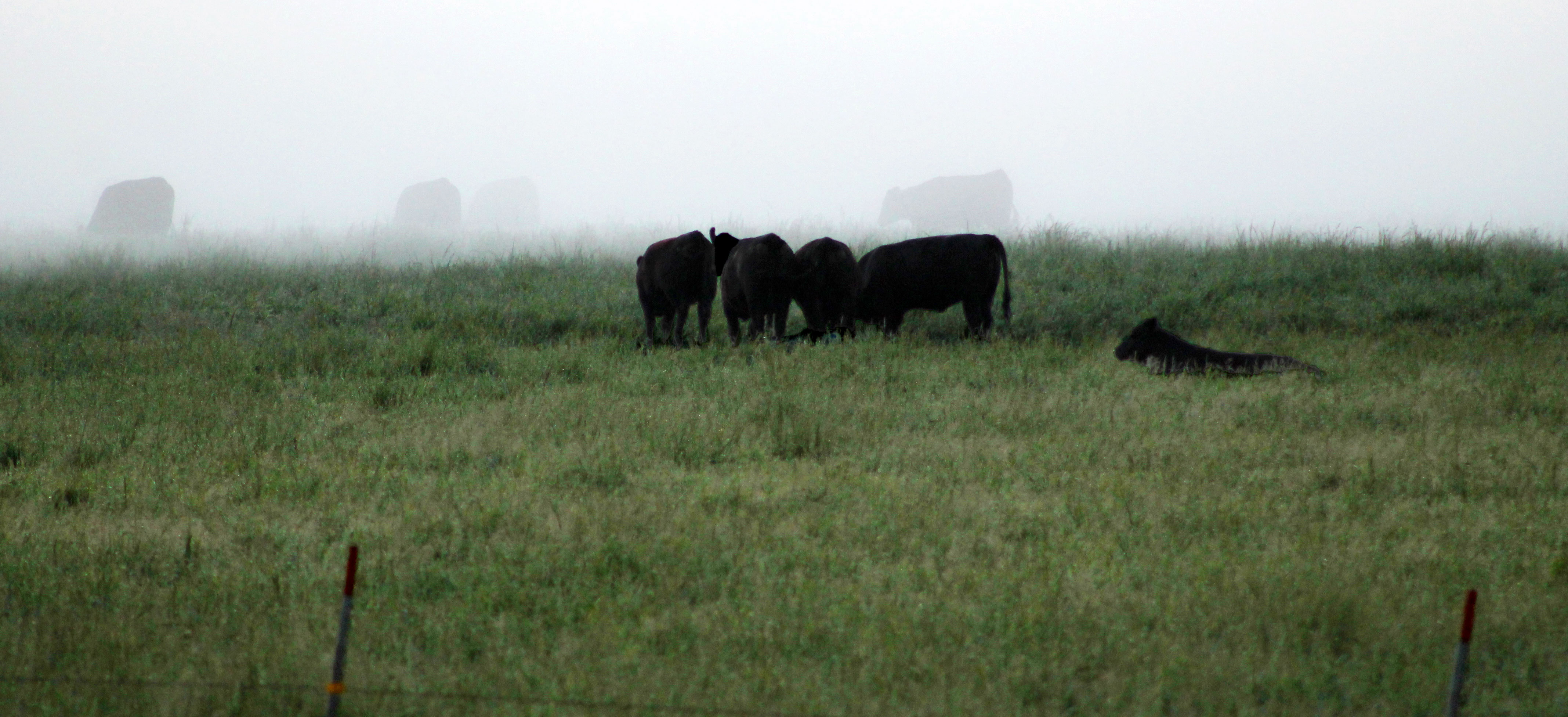
Tips to Prevent a Biological Time Bomb
Grazing management and diagnostic testing are key to tracking and minimizing effects of liver flukes.
Affecting more of the country now than ever, liver flukes are no longer just a coastal issue. Cases have not been found in all 50 states yet, but because of the way cattle are shipped now, spread is bound to happen.
Liver flukes have an incredible life cycle dependent on an intermediate host, Jody Wade, a technical veterinarian with Boehringer Ingelheim, told Editor Shauna Hermel in an interview for the Angus At Work podcast. “You have to have a snail involved to be able to transmit that fluke and get it through its life cycle.”
Adult flukes living in a host animal deposit eggs that are passed in the animal's feces. The eggs hatch in water, releasing miracidia — the larval stage of the fluke — which invade the aquatic lamnaeid snail. For both the snail and the miracidia to thrive, there must be a moist wetland. Once in the snail, the miracidia go through a series of transformations, exiting the snail as cercaria, which attach to grass. They complete their transformation into adult liver flukes once ingested by cattle or sheep, and they can cause a condition known as fascioliasis.
“What happens, basically, is cattle that have been affected with the fluke before, they pass those eggs out onto the pasture. Those eggs, once they get into this moist area, they will make their way into that intermediate host, which is the snail,” said Wade. “Once they get into that snail, then they go through this whole big conglomeration of changes again, and then those snails pass that miracidia out, hatch it out just like the cattle did the eggs.”
The whole cycle repeats itself, dependent upon weather conditions and actions taken by producers to help mitigate the issue.
On the increase
An increase in cases — and in unexpected areas — has started gaining attention.
“We are doing fecal diagnostics now and sending them to some of the veterinary schools to actually look for the liver fluke eggs,” said Wade. “We’re actually finding them, and we’re finding them in places that you just couldn’t imagine that they’re there.”
Finding these liver flukes in typically fluke-free areas means increasing diagnostics and surveillance to find them and get ahead of them. The troubling part is that liver flukes are quiet invaders. Without fecal testing you may not be aware of their presence.
“Usually when we know that we’ve got a real liver fluke problem is when these cattle end up on a kill floor, on the slaughter floor, and we’ve got all kinds of livers that are being condemned just due to the prevalence of all the liver flukes that are there,” said Wade.
Preventing a problem
The best way to help prevent cattle from picking up the parasite is management. Keeping cattle out of wet areas during certain times of year, knowing if you are in an endemic area and being aware of the evolution of this parasite are important steps to take as producers.
“We used to think that you didn’t see (liver fluke infestation) in young cattle, that it was mainly older cattle that it affected,” said Wade. “What’s amazing is now we’re seeing it in cattle less than 9 months of age.”
The best thing for producers in endemic areas to do is begin treating their animals to prevent infestation as best they can. Wade recommended producers use clorsulon to treat animals for liver flukes because it comes in many combinations that can fit producer needs.
Often these drugs are only combating the adult stages of the liver fluke. Much of the damage is done, however, while they are in their juvenile stages as they migrate through bile ducts trying to get to tissues.
Even if treatments are just targeting the adult stages and not the juvenile stages, “we’re still way ahead of the game, and we can slow down some of that devastation that you see to the liver,” said Wade.
The idea here is to get ahead of liver flukes on cow-calf operations to keep those younger animals from picking it up before being moved to stocker operations. If it can be stopped on the cow-calf operation, then we appear to be ahead in the intermediate stage and decrease the chances of infesting more animals.
Because this parasite is manifesting itself in places it has never been, Wade encourages producers to be diligent in maintaining the cattle’s environment and using clorsulon to treat animals as we continue to learn more about this disease.
“It’s an old disease that’s been around a long time,” said Wade. “But it’s a never-ending cycle that we’re beginning to learn about.”
To listen to the entire podcast, download the Angus At Work episode, “Tips to Prevent a Biological Time Bomb, with Jody Wade,” wherever you listen to your favorite podcasts. You can also find it in our archive at https://www.angusbeefbulletin.com/plus/podcasts.html.
Editor’s note: Taylor Edwards, an ag communications student at Auburn University, is the 2023 Angus Beef Bulletin summer intern. [Lead photo by Cole Kucan from 2017 NJAA/Angus Journal Photo Contest.]



